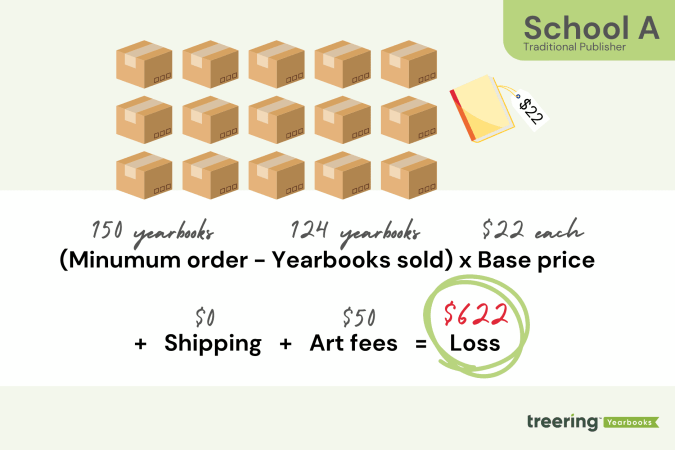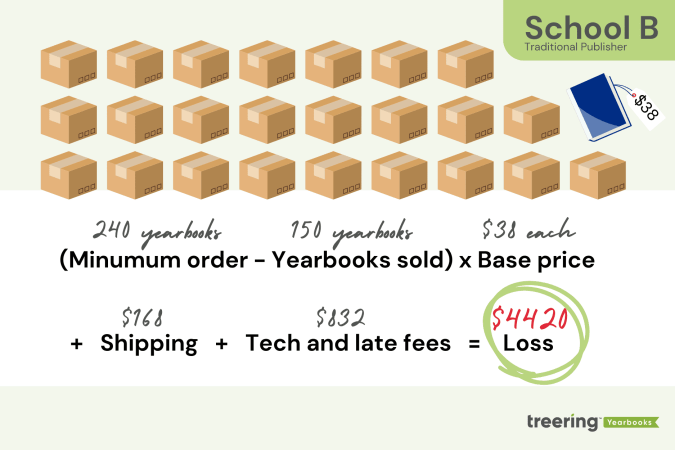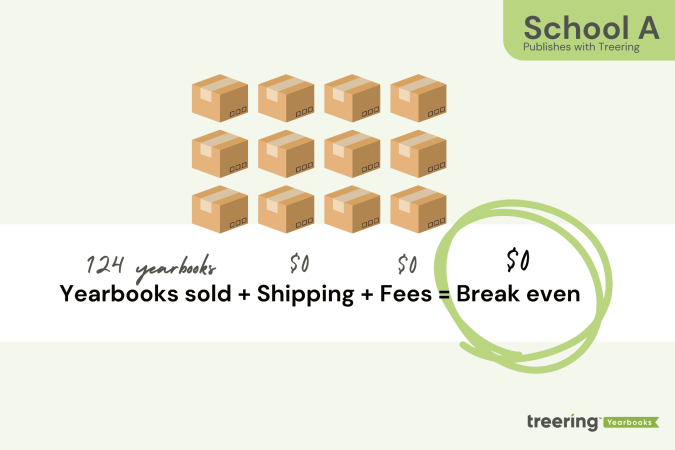
Erikalinpayne
February 11, 2025
2
Min Read Time

Yearbooks can be a costly investment for schools. Some publishers typically require schools to commit to a specific number of yearbooks at the start of the year, even before they’re sold to parents. If the school cannot sell all the books, it is left with the financial responsibility for the unsold copies.
Not Treering.

Yearbook creators, like John Vogel from Whitesville Elementary School in KY, turned their yearbook bill into a yearbook check when they switched to Treering.
Treering prints what you need using print-on-demand technology, and we make it personal. When yearbook creators enable custom pages, each family has the option to personalize two pages that only print in their yearbook, making every book unique. (More on us later.)
Yearbooks are historical. Since Yale published the first one, improvements such as automated presses, desktop publishing software, and digital cameras have made mass-producing yearbooks and collaborating on design easier. Unfortunately, not all of these have translated into the bottom line.
Traditional yearbooks are expensive because the majority of yearbook charges happen in these five main areas:
1. Printing and Production Costs: Usually rolled into the base price, these are the plant charges for producing your core book, including paper, cover stock, and color vs. black-and-white pages.

2. Design and Publishing Software: Big-name design software charges per user, even when integrated into the yearbook publisher’s design application. Publishers sometimes add on charges for professional design support; this is most common when schools want a custom cover.
3. Shipping and Distribution: Since yearbooks are heavy, the cost of delivering large boxes to the school adds up. Some schools must also factor in storage costs or extra distribution efforts, especially if books arrive after the school year ends.

4. Spring Supplements or Inserts: With deadlines as early as February, many schools create and print supplements for spring sports, graduation, or prom. These stick-in pages result in additional printing and shipping costs.
5. Fees: Financial penalties such as art set-up fees, minimums, late fees, proofs, marketing materials, cloud storage, and training and support can add up. Sometimes, advisers don’t see them until the final invoice.
We’re going to toot our own horn for a sec: Treering operates at no cost to schools, with no minimum orders, commitments, or leftover books to manage. Using digital printing, our platform streamlines production, allows for a three-week turnaround, and even accommodates after-deadline orders.
There are no late fees, and you control your deadline.
This flexible approach eliminates inventory management, avoids extra costs, and makes yearbooks more affordable—especially for smaller schools.
Additionally, your per-book price is our only price. It covers everything you may be used to paying for separately, like printing, bulk shipping, e-commerce, marketing, support, custom covers, software, and top quality. It’s based on the number of pages in your yearbook and the cover finish.
Remember School A and School B from above? Here's what happened when they switched to Treering.


When we entered the yearbook space in 2009 touting a print-on-demand, no-contract yearbook solution, schools were wary of this too-good-to-be-true proposition. To learn how other schools gained control over their yearbook finances by partnering with Treering Yearbooks, check out these additional yearbook creator case studies: